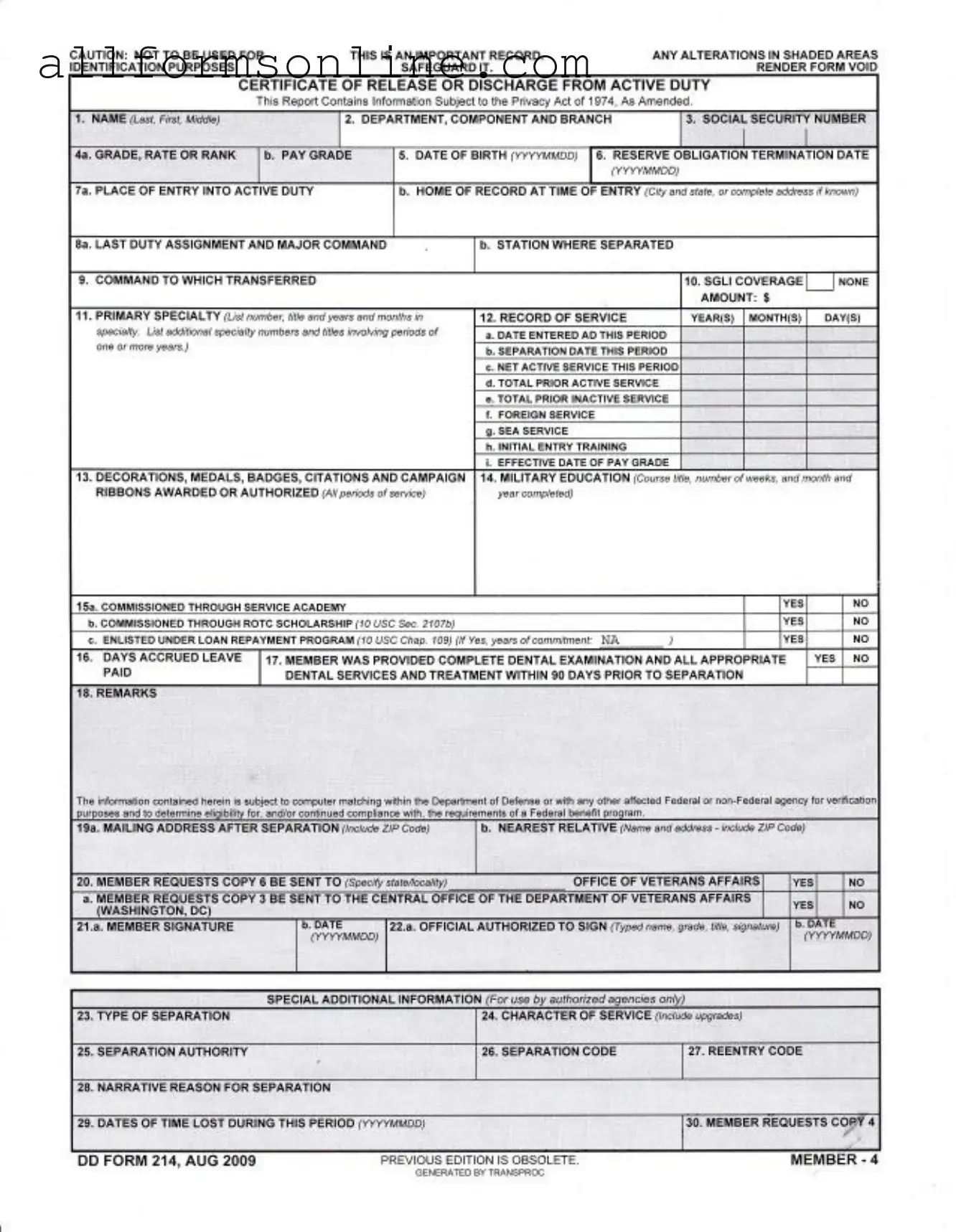What is a DD Form 214?
The DD Form 214, officially known as the Certificate of Release or Discharge from Active Duty, is a vital document issued to military service members upon their separation from active duty. This form contains important information about the member’s service, including dates of service, rank, and the nature of the discharge. It is crucial for veterans seeking benefits and services from the Department of Veterans Affairs (VA) and other organizations.
Why is the DD Form 214 important?
The DD Form 214 serves as proof of military service. It is often required for accessing veteran benefits, including healthcare, education, and home loans. Additionally, it may be needed for employment opportunities, as many employers prefer or require documentation of military service. Safeguarding this document is essential, as it is not intended for identification purposes.
How can I obtain a copy of my DD Form 214?
You can request a copy of your DD Form 214 through the National Archives or the appropriate military branch. If you are a veteran, you can also contact your local VA office for assistance. Be prepared to provide personal information such as your Social Security number, dates of service, and any relevant discharge information to facilitate the process.
What should I do if my DD Form 214 is lost or damaged?
If your DD Form 214 is lost or damaged, you should request a replacement as soon as possible. Contact the National Archives or your military branch to initiate the replacement process. It may take some time to receive a new copy, so act promptly to avoid delays in accessing benefits or employment opportunities.
What information is included on the DD Form 214?
The DD Form 214 includes various details about your military service, such as your name, Social Security number, dates of service, rank, discharge type, and any awards or decorations received. It also notes your character of service, which can impact eligibility for benefits. Review the form carefully for accuracy, as any discrepancies may cause issues later.
Can my DD Form 214 be altered?
No, altering the DD Form 214 is strictly prohibited. Any changes made to the form, especially in shaded areas, will render it void. If you find errors on your DD Form 214, you must request a correction through the appropriate channels rather than attempting to make changes yourself.
What should I do with my DD Form 214 once I receive it?
Once you receive your DD Form 214, store it in a safe place. Consider making multiple copies for your records. You may need to present it when applying for veteran benefits, jobs, or other situations that require proof of service. Keeping it secure and accessible is crucial for your future needs.
